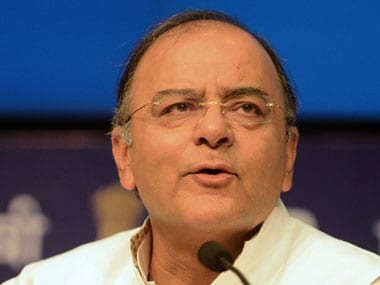For any ruling party at the Centre it is a given that India will have a defence minister – full-fledged, not part time. It is also a given that in these times when India is facing unprecedented heat from two of its neighbours it has fought wars with – border firing from Pakistan and incursions from China – India will have a full-fledged defence minister to take a call on such national security challenges. And when a nationalist party like the BJP is at the helm of affairs, one expects this even more. But unfortunately it has not happened. It has been more than four and a half months since Prime Minister Narendra Modi gave Arun Jaitley additional charge of the defence ministry, though his primary portfolio was meant to be finance. More than 140 days since the Modi government’s installation, Jaitley still continues to be the cabinet minister for three important portfolios, finance, defence and corporate affairs – the first two being the CCS (Cabinet Committee on Security portfolios). [caption id=“attachment_1755419” align=“alignleft” width=“380”]  Arun Jaitley. AFP.[/caption] This is a critical time for the nation’s three armed forces – the army, the navy and the air force. All three have been waiting for years and looking up to the defence minister for keeping fighting fit. To do this, each of the three armed forces has a shopping list, a genuine demand for refurbishment of their respective arsenals after years of neglect. AK Antony was the longest serving defence minister of India who held this crucial portfolio uninterruptedly from 24 October 2006 to 26 May 2014. It is an open secret that during Antony’s tenure the Indian armed forces’ dream of modernization and beefing up their strength by way of inducting state-of-the-art weaponry remained a pipe dream only. The Indian armed forces as well as the nation justifiably looked towards Narendra Modi when he became the Prime Minister on 26 May, 2014. But thus far, PM Modi too has disappointed in this context. Not a single new weaponry system has been added to their arsenal. One expected that Arun Jaitley would do it after he was given additional charge of the defence ministry. But then the 62-year-old Jaitley has been bogged down with acute health issues and has been in and out of hospitals, eventually missing on the PM’s various foreign trips where he was supposed to go. The Prime Minister has undertaken many foreign trips, particularly to Japan and the United States where the defence component of the Indian diplomacy with regard to these countries was crucial and prominent on the agenda of talks. But now the delay on announcement of a full-fledged defence minister is hurting the Indian military establishment. There are several pressing issues with regard to the three armed forces which the defence minister needs to take a call on but that has not been done yet. For example, India needs to urgently take a call on hiking the FDI in defence from the existing 49 per cent to 100 per cent, a case amply argued by this writer here. The Indian Army has a long-standing demand for guns as it has not got a single new gun since past 28 years. The artillery programme of the Indian Army has been neglected for long and requires at least a $4 billion makeover at the earliest. The Indian Air Force has been going around the circles for beefing up its strength of fighter aircraft. The IAF’s current fighter squadron strength is just 34 whereas the minimum benchmark is set at 42 squadrons. Two major projects – Medium Multi Role Combat Aircraft (MMRCA) with France and Fifth Generation Fighter Aircraft (FGFA) with Russia – which are potential game changers are currently nowhere in the implementation stage. The two projects put together require at least $20 billion. The Indian Navy badly needs to augment its inventory of submarines which is currently at an abysmal 13, as against over 50 in case of China. India requires to plough in around $10 billion for bringing the strength of submarines to a level where it can counter China and Pakistan effectively. Technology and money are the two major problems being faced by the Indian armed forces’ modernization. These are not insurmountable problems. Plenty of solutions are available. India currently is spoilt for choice when it comes to off-the-shelf purchases but India, very wisely, has been focusing on self-reliance. This makes sense because in the event of war, off-the-shelf purchases would mean nothing as the exporting countries like the US and other western nations would dilly-dally in meeting their contractual obligations. To get out of this kind of situation, India will have to rely heavily on Indian private companies and would have to create friendly business conditions and give them level-playing field as the fast expanding defence arena is too vast a field to be catered to by the government any longer. All this requires a hands-on, full-time defence minister which unfortunately India does not have for past four and a half months. The writer is Firstpost Consulting Editor and a strategic analyst who tweets @Kishkindha
For any ruling party at the Centre it is a given that India will have a defence minister – full-fledged, not part time. It is also a given that in these times when India is facing unprecedented heat from two of its neighbours it has fought wars with – border firing from Pakistan and incursions from China – India will have a full-fledged defence minister to take a call on such national security challenges.
Advertisement
End of Article
Written by Rajeev Sharma
Consulting Editor, Firstpost. Strategic analyst. Political commentator. Twitter handle @Kishkindha. see more


)
)
)
)
)
)
)
)
)



